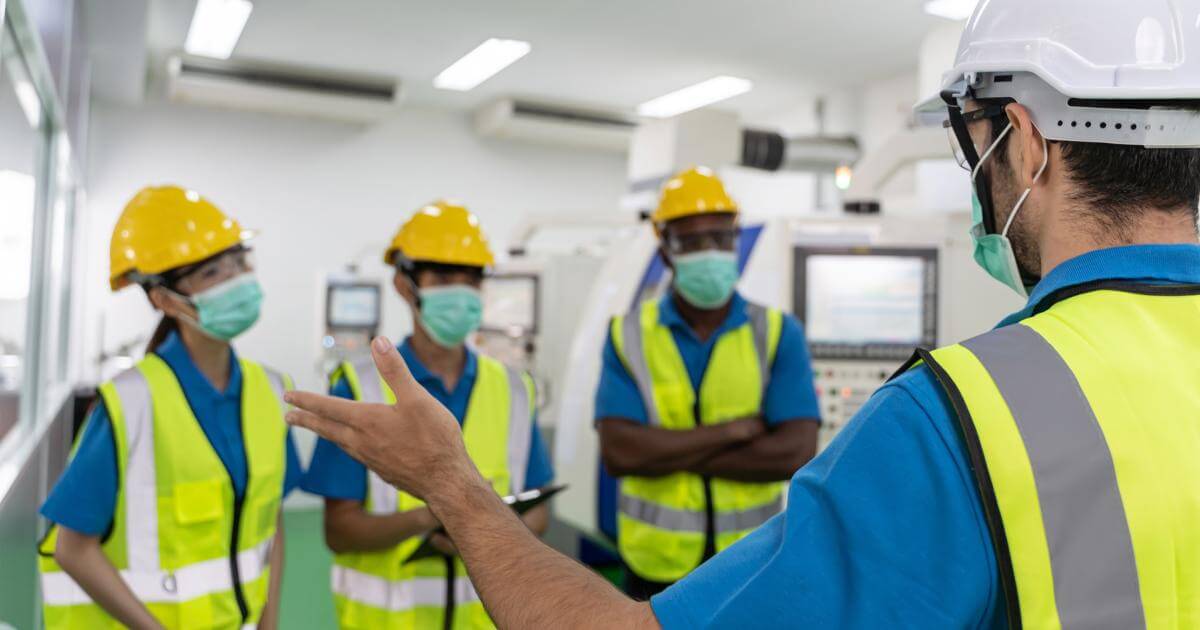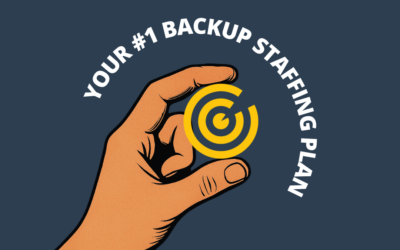Anyone working in construction, landscaping, or food production industries knows the constant struggle of keeping a consistent, well-trained workforce. But high turnover isn’t just an inconvenience — it’s a real safety risk.
When workers are constantly rotating in and out, the chances of accidents skyrocket. In fact, high turnover rates and increased safety incidents often go hand in hand.
The cyclical nature of these high-churn industries can make it feel like you’re always fighting an uphill battle.
Finding the right workers, training them, and ensuring they’re prepared to hit the ground running is hard enough. But when the demand for labor fluctuates wildly with the seasons, the challenge is amplified to Level 11 on a scale of 1 to 10.
For businesses in regions like the Pacific Northwest — where weather, agriculture cycles, and tourist seasons drive dramatic shifts in labor needs — the problem is even more pronounced.
Turnover can feel inevitable, and safety can quickly become a casualty (pun intended).
This article aims to do two things: explain the correlation between workplace safety and employee turnover, and show what hiring managers can do to reduce turnover while maintaining safety standards.
Let’s put on our safety glasses and take a look.

The Connection Between Employee Turnover and Safety
High-Churn Industries = Higher Safety Risks
In high turnover industries, safety can easily slip through the cracks. New and inexperienced employees, especially in high-risk jobs like construction, often struggle with proper safety protocols and equipment handling.
A study by Travelers analyzed 1.2 million workers compensation claims and found that first-year employees are the most susceptible to workplace injuries, making up more than one third of claims — demonstrating the critical need for better training and onboarding.
When workers are constantly rotating in and out, it’s easy for details to be missed, especially when new hires are thrown into the job during peak seasons without thorough training.
Consider the logging industry in the Pacific Northwest, where seasonal workers are brought on to meet increased demand.
Logging is already one of the most dangerous professions, and when turnover spikes, the risk of accidents and injuries only grows. The combination of heavy machinery, unpredictable weather, and new workers unfamiliar with safety protocols creates a hazardous work environment.
Impact on Team Cohesion and Communication
In industries like construction, where teamwork is critical, high turnover disrupts communication and trust.
New employees may not yet understand the nuances of team dynamics, and experienced workers might feel the pressure to take on extra responsibilities, leading to burnout or lapses in safety.
This lack of cohesion can be dangerous — for example, in food production facilities, a miscommunication during a shift change can lead to improper equipment handling, increasing injury risk.
Proactive Safety Culture as a Retention Strategy
A proactive safety culture can help address these issues. When employees see that their safety is a top priority, they’re more likely to stick around.
Companies should invest in ongoing safety training, incentivize safe behavior, and ensure that even seasonal or temporary workers are integrated into the safety culture from day one.
Many companies in Oregon’s wine industry, for instance, implement rigorous safety protocols during harvest season, when temporary workers come aboard for demanding physical labor.
By providing safety incentives and making everyone — from year-round employees to seasonal pickers — feel responsible for upholding safety standards, these companies reduce accidents and improve employee retention.

Strategic Workforce Planning: Getting Ahead of the Curve
One of the best ways to combat employee turnover is through accurate demand forecasting and workforce planning.
By analyzing historical data and market trends, you can better predict staffing needs, avoiding the overwork and burnout that lead to both high turnover and safety risks.
For example, cherry farms in the Pacific Northwest know that harvest season is their peak. Using workforce management software, they predict labor needs, plan for seasonal hires, and reduce the stress on permanent employees. In turn, retention and safety improve — the cherry on top, if you will.
Cross-Training for Retention and Safety
In high-churn industries, cross-training is more than a productivity booster — it’s also a vital safety measure. When employees are trained to handle multiple roles, they can step in where needed without the steep learning curve that often comes with seasonal hiring.
Consider a food manufacturing plant ramping up for holiday production. Cross-training employees to handle multiple production lines ensures flexibility and reduces the risk of accidents caused by unfamiliarity with equipment or processes.
From our conversations with several manufacturing leaders in the Pacific Northwest, cross-training has been a game-changer.
Not only does it create flexibility during peak times, but it also gives employees that extra boost of job security — something that makes them want to stick around longer. They see that their skills are valued, which can significantly reduce turnover and create a more stable and safe work environment.

Investing in Employee Well-Being: More Than a Paycheck
It’s no secret that competitive pay and benefits are essential for attracting and retaining employees, especially in high-demand, high-churn industries. But it’s not just about throwing money at the problem — it’s about investing in the overall well-being of your employees.
Compensation and Benefits That Reduce Turnover
While pay differentials during peak seasons are one strategy (offering higher wages during busy times to attract and retain workers), companies that go a step further by investing in benefits that improve employee well-being tend to have lower turnover rates.
In the Pacific Northwest’s outdoor recreation industry, some companies offer perks like outdoor gear discounts, mental health resources, and wellness programs to help employees maintain a better work-life balance.
Employees who feel supported are more likely to stay, and this stability directly impacts safety. When workers aren’t overworked or stressed, they’re less likely to make mistakes that lead to accidents.
Safety as a Key to Retention
By creating a workplace where employees feel that their safety is a top priority, you can increase loyalty and retention.
Workers in high-risk industries like construction are more likely to stay with a company that invests in the latest safety gear, provides thorough training, and regularly checks in on their well-being.
Temporary Staffing Solutions to Avoid Burnout and Keep Safety First
When seasonal demand peaks, it’s tempting to stretch your existing workforce to cover the gaps. But this leads to burnout, turnover, and compromised safety.
Temporary staffing solutions can provide the flexibility needed to meet demand without overloading your team.
Leveraging Temporary Staffing to Prevent Overwork
Temporary staffing agencies are not just a resource for filling gaps in your workforce. They can also help maintain safety standards by providing trained workers who are ready to hit the ground running (with proper form, of course).
For example, a distribution center might bring on temporary staff during the holiday rush to handle increased shipping demands. By partnering with a staffing agency that specializes in warehouse work, they can ensure that the temporary workers are trained in safety protocols, reducing the risk of accidents during peak season.

Prioritizing Safety and Retention to Boost Productivity
In high-churn industries, reducing turnover isn’t just about maintaining your workforce — it’s about protecting your company from the safety risks that come with high turnover.
By implementing strategies like accurate workforce planning, cross-training, investing in employee well-being, and leveraging temporary staffing solutions, you can create a safer, more productive work environment.
After all, in the Pacific Northwest’s fast-paced industries, from logging to food production, safety and stability go hand in hand. Keep your workforce strong, and you’ll keep your business thriving.
Want More Workforce Management Insights?
Curious about other ways to keep your workforce strong (and safe)? Head over to our Employer Insights page.



